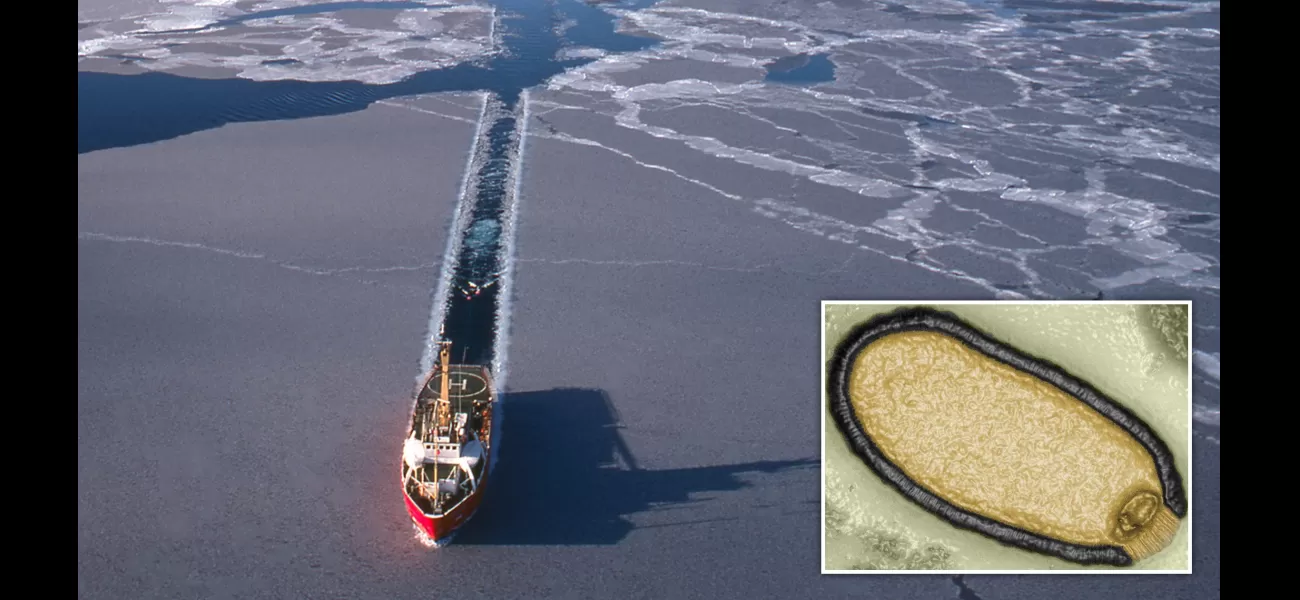Siberian 'zombie' viruses could cause a new pandemic if unleashed.
Scientists issue warning about deadly viruses thawing from ancient ice.
January 21st 2024.

Scientists have warned that the thawing of ancient deadly viruses in the Arctic could have disastrous consequences. As the Earth's climate continues to warm and shipping routes through thick ice become more common, there is a growing concern about the re-emergence of these viruses.
According to a report by the Observer, an "Arctic monitoring network" is being established to detect any outbreaks of diseases caused by these long-dormant viruses. Geneticist Jean-Michel Claverie of Aix-Marseille University expressed his concern, stating that not enough attention has been given to the potential threat of an outbreak in the far north that could spread to other parts of the world.
These viruses have been lying dormant in the permafrost of the northern hemisphere for thousands of years, with some dating back as far as 48,000 years. One such virus, Pithovirus sibericum, was isolated after being frozen for 30,000 years. Claverie explained that the permafrost's cold, dark, and oxygen-deprived conditions are perfect for preserving biological material, even for thousands of years.
However, the disappearance of Arctic sea ice due to global warming is a major concern. This has led to an increase in shipping, traffic, and industrial development in the region, particularly in Siberia. Plans for large-scale mining operations in the area are also a cause for alarm, as these activities could release large amounts of pathogens that have been trapped in the permafrost for centuries. Claverie warned that miners could potentially breathe in these viruses, leading to disastrous consequences.
A study published in the journal PLoS Computational Biology further highlighted the potential risks posed by these ancient pathogens. The study, led by Dr. Giovanni Strona and Professor Corey Bradshaw, used computer simulations to model the impact of ancient pathogens on bacterial communities. The results showed that these pathogens could survive and adapt in the modern world, with some even becoming dominant in their new environment.
Professor Corey Bradshaw emphasized the importance of understanding the potential risks posed by these ancient microbes and being prepared for any unintended consequences of their release into the modern world. He stated that the risk is no longer a mere fantasy and that society must take measures to defend against it.
According to a report by the Observer, an "Arctic monitoring network" is being established to detect any outbreaks of diseases caused by these long-dormant viruses. Geneticist Jean-Michel Claverie of Aix-Marseille University expressed his concern, stating that not enough attention has been given to the potential threat of an outbreak in the far north that could spread to other parts of the world.
These viruses have been lying dormant in the permafrost of the northern hemisphere for thousands of years, with some dating back as far as 48,000 years. One such virus, Pithovirus sibericum, was isolated after being frozen for 30,000 years. Claverie explained that the permafrost's cold, dark, and oxygen-deprived conditions are perfect for preserving biological material, even for thousands of years.
However, the disappearance of Arctic sea ice due to global warming is a major concern. This has led to an increase in shipping, traffic, and industrial development in the region, particularly in Siberia. Plans for large-scale mining operations in the area are also a cause for alarm, as these activities could release large amounts of pathogens that have been trapped in the permafrost for centuries. Claverie warned that miners could potentially breathe in these viruses, leading to disastrous consequences.
A study published in the journal PLoS Computational Biology further highlighted the potential risks posed by these ancient pathogens. The study, led by Dr. Giovanni Strona and Professor Corey Bradshaw, used computer simulations to model the impact of ancient pathogens on bacterial communities. The results showed that these pathogens could survive and adapt in the modern world, with some even becoming dominant in their new environment.
Professor Corey Bradshaw emphasized the importance of understanding the potential risks posed by these ancient microbes and being prepared for any unintended consequences of their release into the modern world. He stated that the risk is no longer a mere fantasy and that society must take measures to defend against it.
[This article has been trending online recently and has been generated with AI. Your feed is customized.]
[Generative AI is experimental.]
0
0
Submit Comment





